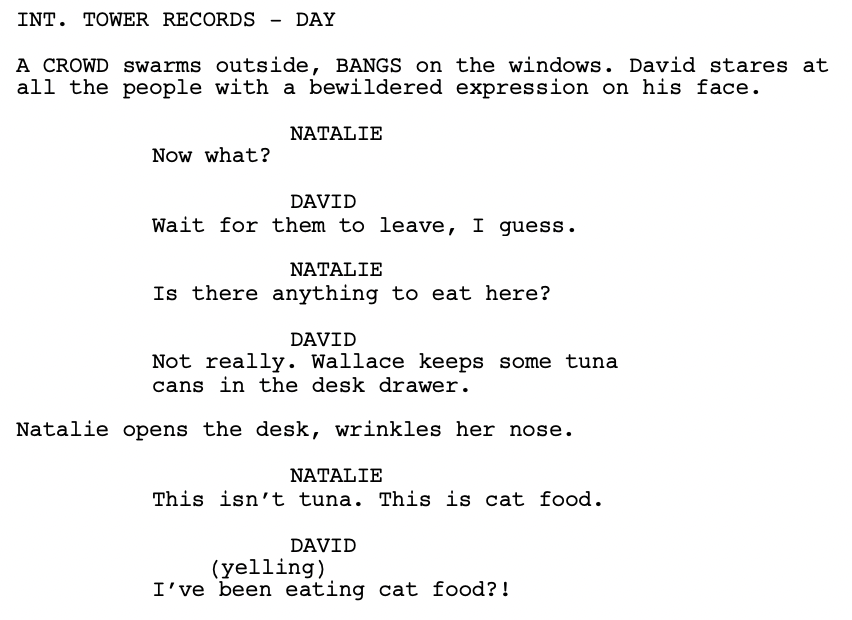Fix This - 8.10.25
Pretty much all screenwriting books talk about structure, character, dialogue, etc. but very few focus on what we call “physical writing”, which means the words on the page.
When a producer picks up your script, they don’t know you have an amazing third act. But they can tell right away if you’re a good writer.
Take a look at the excerpt below. How would you change it to make the writing stronger?
The first thing we would recommend changing is the line, “…with a bewildered expression on his face.” Why? Because it’s not necessary. Where else would an expression be? On his knee cap? At the very least, you can cut “on his face.”
If you want to make your writing tighter—and, in our opinion, stronger—you can trim the line even further. When possible, we like to put the best word at the end of the sentence. Here’s what that looks like in this example…
If you’re like us, you started reading this scene and thought, “Whoa, where did Natalie come from?"
Because the writer doesn’t establish that Natalie is present, it’s jarring when she speaks. Don’t forget to let us know where the characters are before they start talking. If they’re offscreen, put (O.S.) next to their name above their dialogue. That still helps us understand where they are.
In this case, Natalie was in the same room as David, so the scene should read something like this…
Next, we’d recommend making some changes to the scene’s dialogue. There are a couple places where shortening the lines make them better because you get rid of the direct answer and move directly into something that gives the reader new information. We call this “Leapfrog Dialogue” and go into more detail about it in the dialogue lesson of our online screenwriting program.
Here’s how we’d use it to rewrite two lines in this scene…
The last change is a common mistake and easy fix. When a character yells, put their dialogue in all caps. No parentheticals needed.
That’s better, isn’t it?
If you want to learn more, sign up for our online Screenwriting Essentials program. We’ll teach you our four-phase method for writing a standout screenplay. In addition to mastering major story elements like idea, character, world, and structure, you’ll learn how to get your reader’s attention with sentences that snap.





